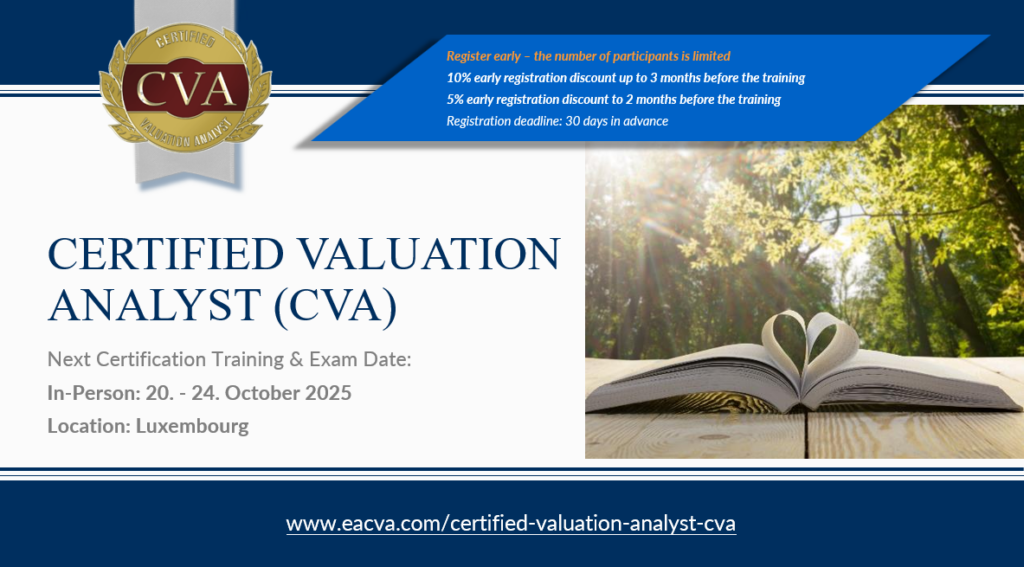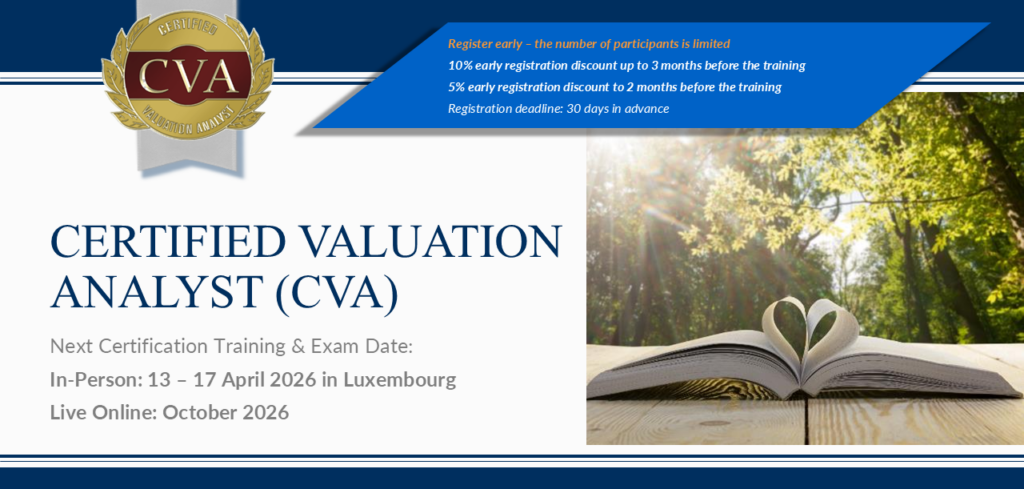
The Certified Valuation Analyst (CVA) is globally the most distinguished and widely recognised business valuation credential, known for the superb training and challenging examination process that leads to earning this prestigious credential. Through rigorous testing, CVAs demonstrate they are qualified to provide capable and professionally executed valuation services.
Certified Valuation Analyst (CVA) – Determine, Defend, and Maximize Company Value™
FREE Webcast Introduction to Certified Valuation Analyst (CVA) is offered on an ongoing basis.
- Next EACVA / LVPA Business Valuation 5-day Certification Program is scheduled from 13 – 17 April 2026 in Live in Person in Luxembourg
- And Live Online in October 2026
2026 Course Schedule:
April 2026
- International CVA training course in English language
- Live in Person
- Date: 13 – 17 April 2026
- Location: Luxembourg
- Registration is open:
October 2026
- International CVA training course in English language
- Live Online via Zoom
- October 2026
- Wednesday to Friday and Monday to Wednesday
- Dates will be announced soon
CVA Training Impressions:
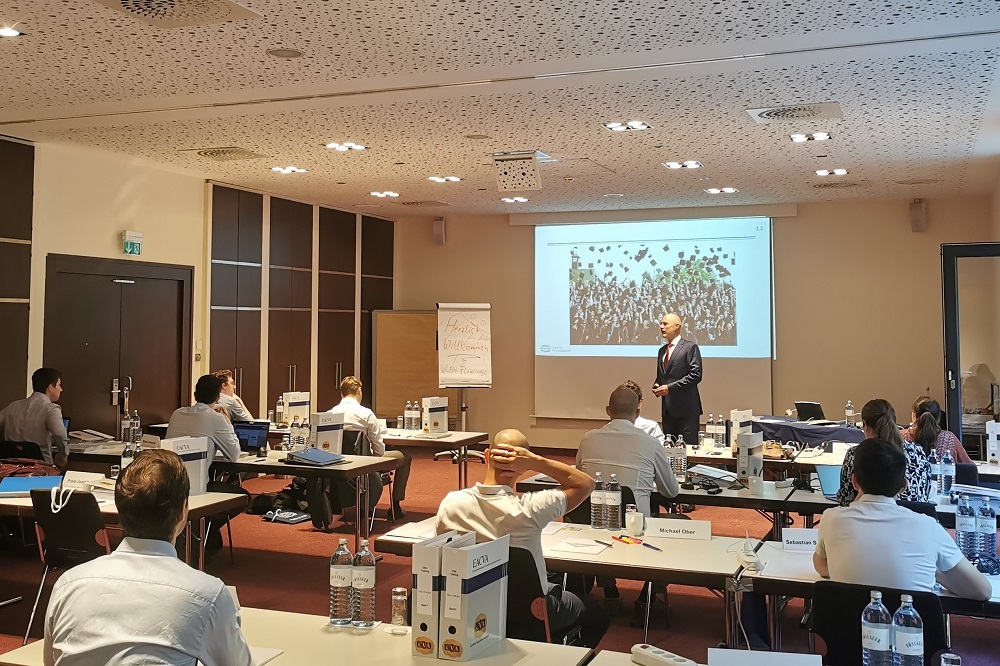
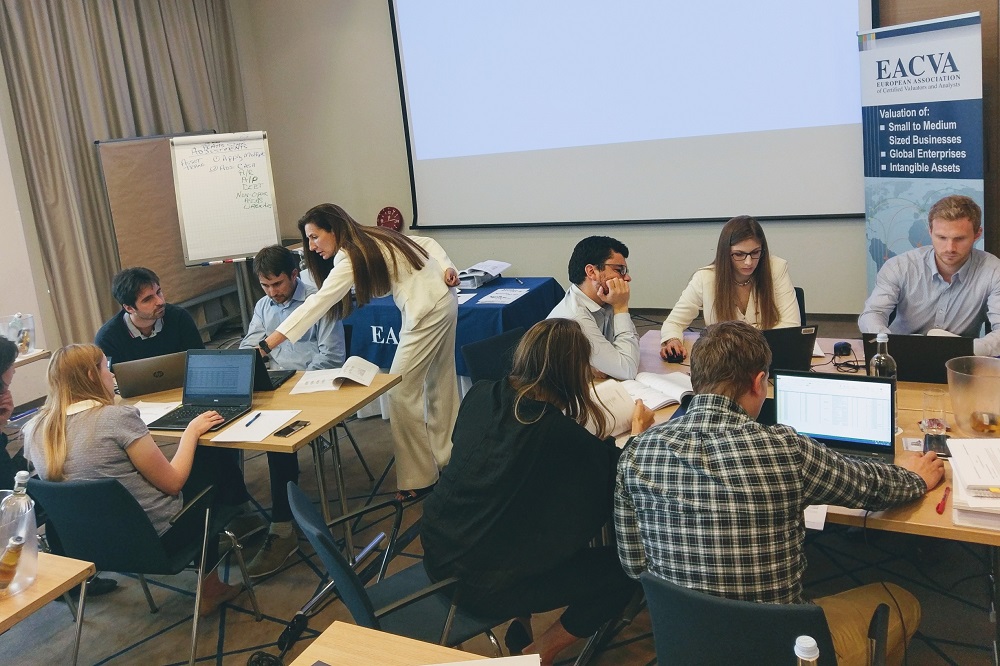
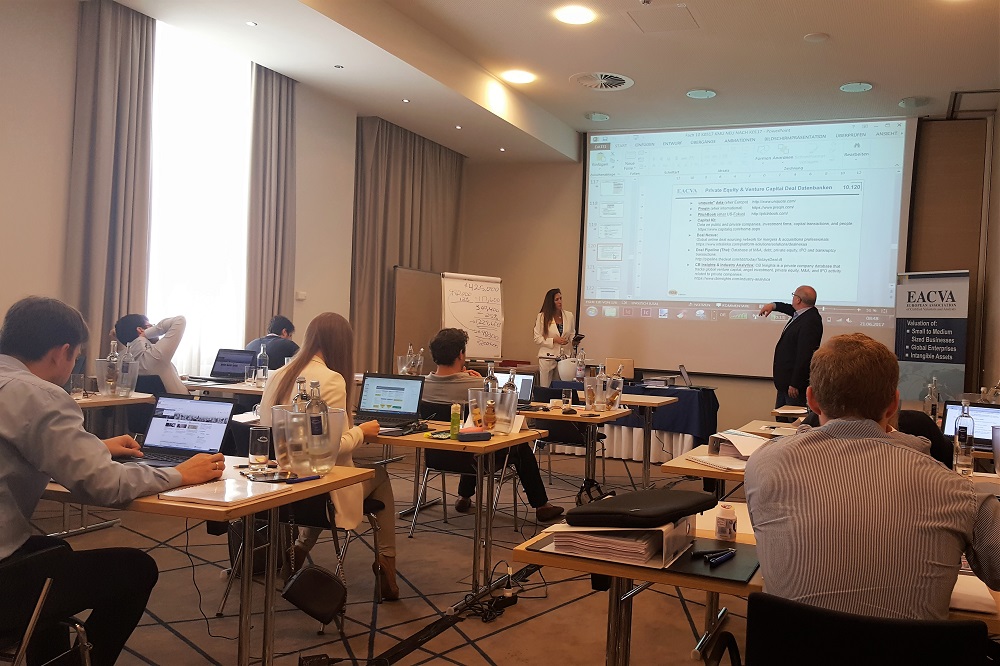
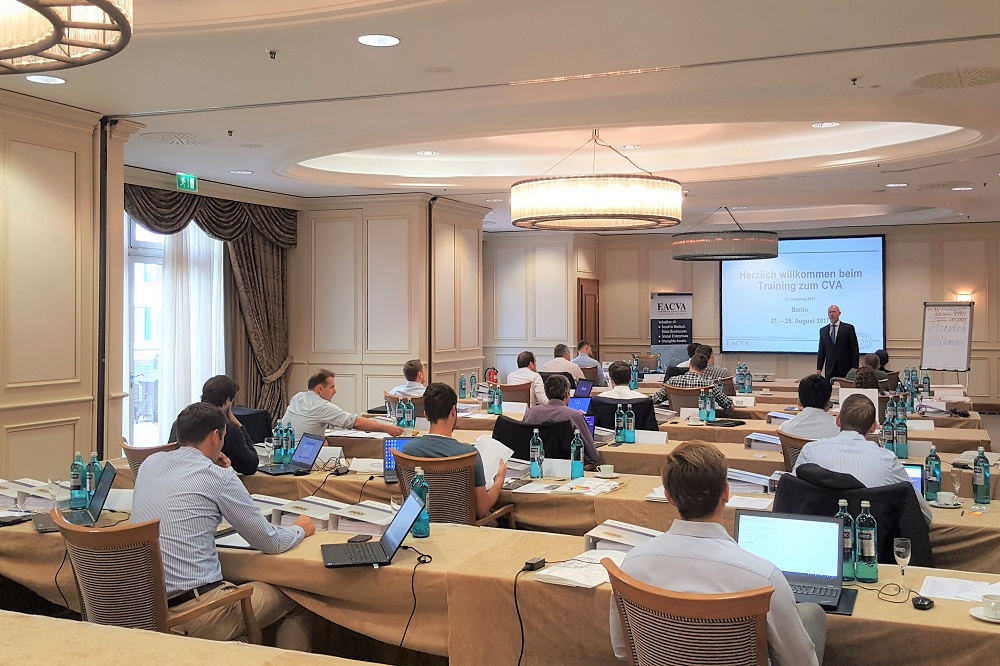

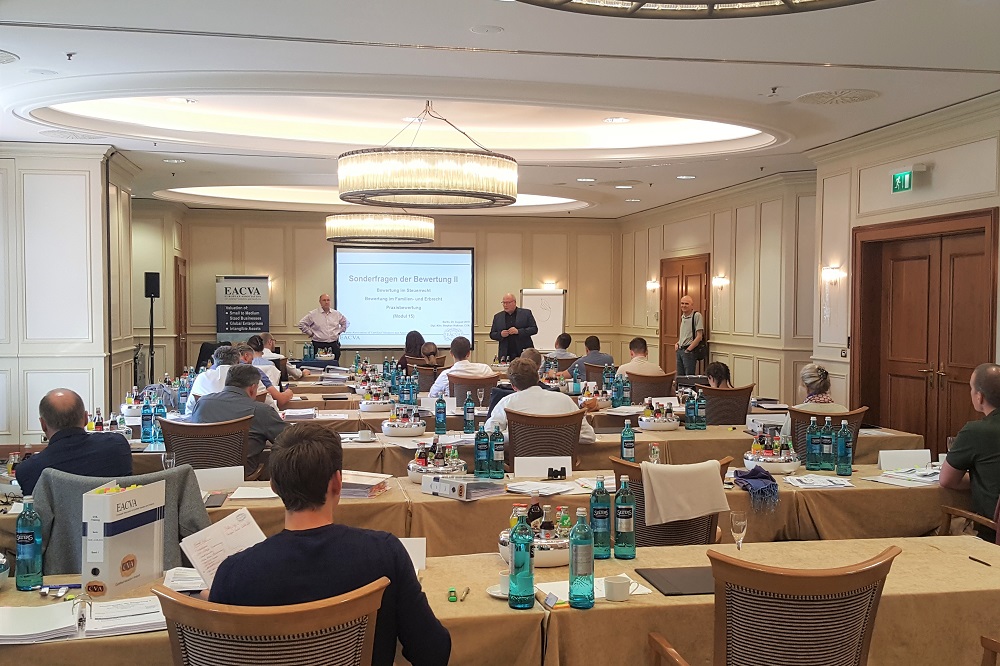
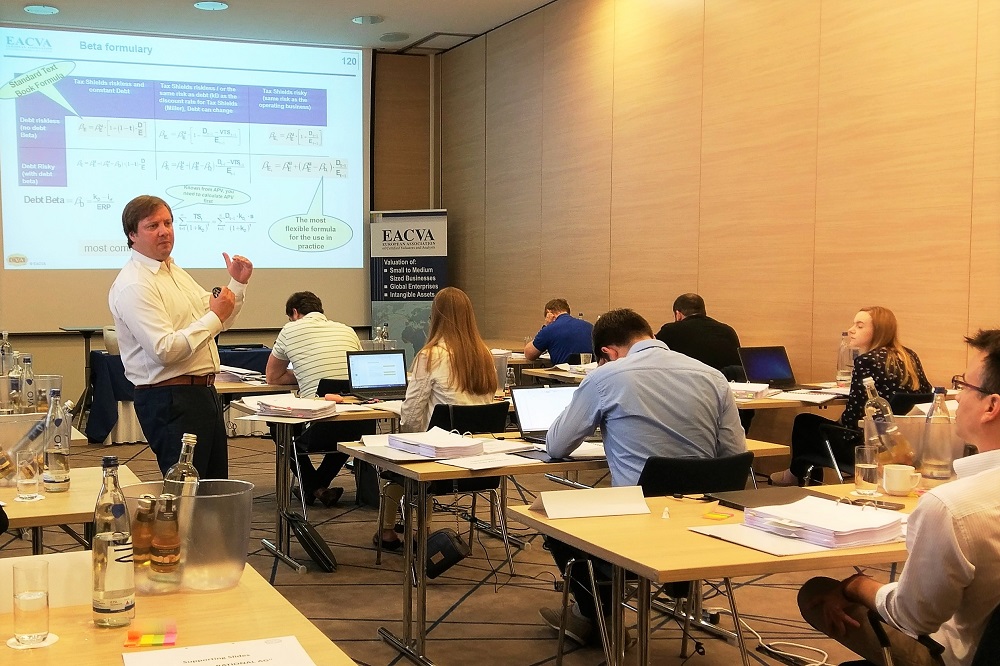
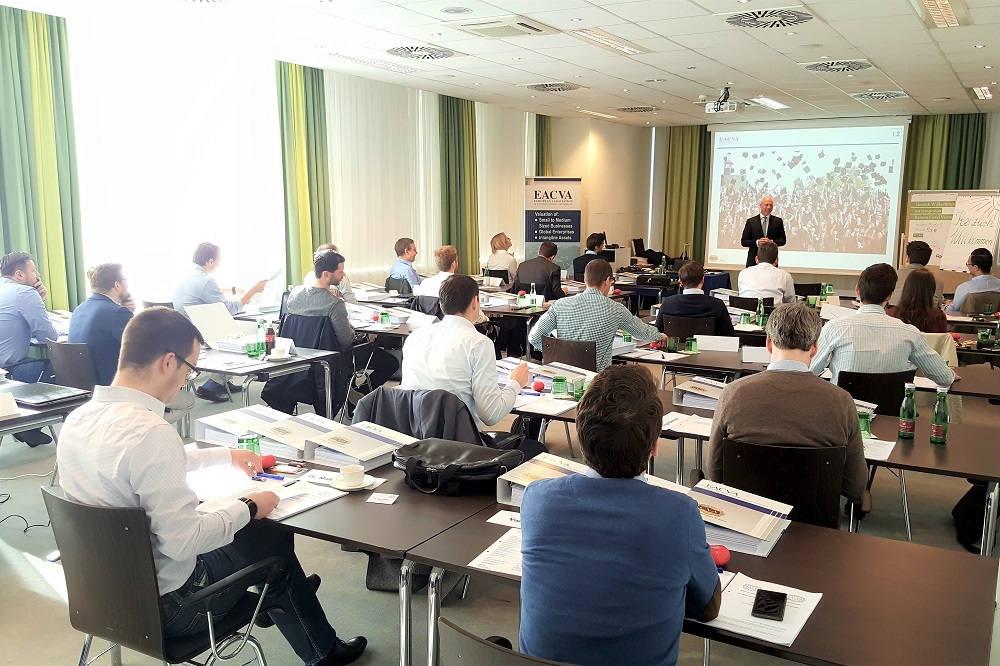
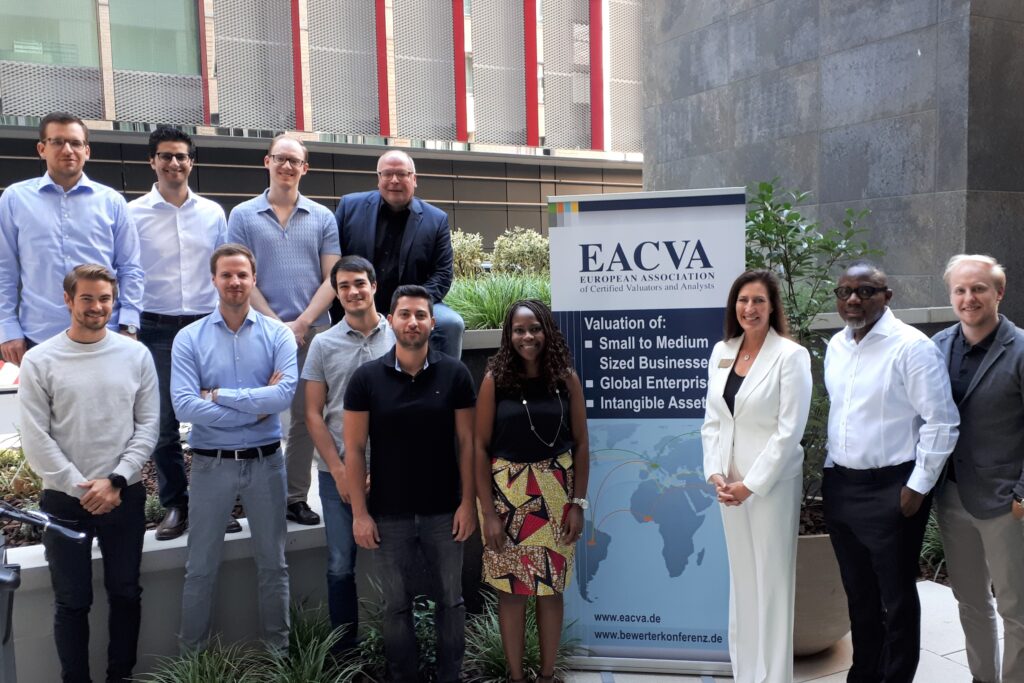
CVA Training Overview
The training program is taught by an experienced team of renowned instructors who will prepare attendees to pass the business valuation certification (CVA) exam.
The Core Body of Knowledge for International Business Valuations (BOK) has been launched in 2017 – along with the International CVA Exam. The BOK and International CVA Exam are global in application to business valuation methodologies and approaches. The CVA training offered globally follows the curriculum as described in NACVA’s Business Valuation Certification and Training Center. NACVA’s international chapters are able to develop and teach supplemental content specific to their country or region, but this supplemental content is not tested on the International CVA Exam. Supplemental content can be added to the International BOK as an appendix.
CVA Training and Exam Information Brochure (PDF)
Course Agenda
I. BV Fundamentals, Techniques & Theory (2 days)
- Introduction to Business Valuation – Value vs. Price – Actual vs. Hypothetical
- Business Valuation Standards
- Professional Standards 2023 (GACVA)
- International Valuation Standards (IVS)
- Standards Comparison & Country Specific Standards
- Engagement Acceptance, Planning & Effective Report Writing
- Qualitative Analysis
- Quantitative Analysis
- Benefit Streams
- Cost of Capital and Other Pricing Models
- Valuation Approaches/Models – Asset, Income, Market and Less Commonly Used Methods (incl. Excess Earnings)
- Discounts, Premiums and Other Adjustments
- Sanity Checks and Reconciliation
- Special Purpose Valuations
- Practice Case − Workshop
II. The Market Approach Part I: Completed Transactions Method (½ day)
- Overview & Understanding of Terms
- Asset vs. Share Deals and Their Impact on Multiples
- Market Value of Invested Capital vs. Enterprise Value
- Completed Transaction Method
- Some Basic Statistics for Business Valuation and the Market Approach
- Data Sources
- Free Industry Transaction Multiples for Europe
- Small (Medium) Comps
- Mid-Sized to Large Comps – European Focus
- Mid-Sized to Large Comps – Global Focus
- PE/VC Focused
- Bridge to Guideline Public Company Method (Part II)
III. The Market Approach Part II: Guideline Public Company Method (½ day)
- Conception and Basic Assumptions
- Sources and Aggregation of Peer Data
- Adjustments Based on Regression Analysis
- Reference Bases for Multiples
- Concurring Adjustments of Multiples
- Enterprise Value Multiples (Market Value of Invested Capital (MVIC) Multiples)
- Equity Value Multiples
- Excess Cash
- Empirical Results
IV. Applications of the Income Approaches: DCF in Depth (1.5 days) –
DCF Case Study: Valuation & Reporting of a European Mid-Market Company –
- Business- and Peer-Group Analysis
- Integrated Financial Planning as the Backbone of Each DCF Model (P&L, Balance Sheet, Cash Flow Statement, Tax Planning)
- Scenario Analysis, Simulation
- Terminal Value, Different Approaches and Assumptions, Competitive Advantage Period, Steady State, Convergence
- Details on Cost of Capital:
- CAPM: Beta in Depth for the Use in Practice
- Debt-Beta
- Unlevering and Relevering Formulas Depending on Different Assumptions Regarding Tax Shields and Debt-Beta
- The Problem of Circularity and the Solutions in Practice
- Modifications of CAPM: e.g. Size Premia in Europe
- Details on DCF-Methods:
- Entity Methods: WACC, APV, Total Cash Flow-WACC
- Net-Debt
- Equity Method: Flow to Equity
- Special Valuation Issues:
- Cash Flows in Different Currencies
- Local CAPM vs. Global CAPM
- Country Specific Risk
V. Valuation of Intangible Assets (½ day)
- Fundamentals of the Valuation of Intangible Assets
- Identification of Intangible Assets
- Valuation Approaches:
- Overview
- Valuation of Assembled Workforce
- Valuation of Technology
- Valuation of Trademarks and Other Marketing Related Assets
- Valuation of Customer and Order Backlog
- Tax Amortization Benefit
- Asset Specific Cost of Capital
- IFRS 3 and Fair Value Measurement Framework (IFRS 13)
- Impairment Test (IAS 36)
- Summary of Assumptions for Fair Value and Value in Use
VI. Exam Preparation – CVA Proctored Exam and Business Valuation Report (Case Study)
CVA Exam and Case Study
The certification process consists of two parts:
I. CVA Proctored Exam
- The five-hour proctored exam consists of 400 multiple-choice questions designed to measure general competency across the domains defined in the Core Body of Knowledge for International Business Valuations (BOK).
- The examination is delivered to candidates either via computer-based testing or live remote proctoring, or paper-and-pencil exam, depending on the test location and modality. Paper-and-pencil exams may be used following training courses.
- Candidates must bring a basic calculator and have their ID (e.g. passport, driver’s license, or other state-issued ID) available and ready to show the proctor before starting the session.
- Candidates taking the exam at a Kryterion test center or via live remote proctoring (LRP)* will receive an exam confirmation e-mail with a test authorization code. System requirements are detailed in the registration confirmation letter.
- Exam pass/fail results are communicated to examinees approx. 14 days after the exam date.
- The exam, if failed, may be retaken for a fee.
II. Experience threshold (BV Report)
a) Case Study
- Completion of the case study demonstrates that the applicant has the ability to apply his/her valuation knowledge in a real life setting and prepare an acceptable valuation report.
- Candidates perform a valuation and write a valuation report of a small/mid-sized (stock listed) company. It is required that the candidate applies valuation approaches or methods deemed in the candidate’s professional judgment to be appropriate under the circumstances and results in a Conclusion of Value. In most cases the companies are selected from the countries of origin of the individual attendees. For example: an attendee from Spain will obtain a case study on a Spanish company. If there is no usable small/mid-sized (stock listed) company available for an individual country, we will provide a Europe based company as the valuation object.
- Processing time is 180 days.
- Attendees have to submit the signed version of the valuation report as well as copies of all working papers in electronic format. EACVA’s Peer Review Team can verify whether or not the candidate can apply the book knowledge he or she has demonstrated.
b) Alternatively to the case study, experienced candidates can submit an actual and signed (real life) valuation report in English language for peer review.
- The valuation report must reflect a Conclusion of Value / Opinion of Value (not a Calculated Value), must be written thoroughly and must comply with the EACVA/NACVA Professional Standards. All important parts of a valuation report, as well as the application of (an) income, market approach(es), – only in exceptional cases – asset approach(es), must be included.
- The Standard of Value should be similar to a (US) fair market value but must not be the same. For example, some attendees in Europe use the International Valuation Standards (IVS) „market value“ as Standard of Value. If there is a similar Standard of Value in your country applicable, this is fine as well.
- The report must be signed by the attendee and prepared in the last 12 months. The report can be sanitized.
